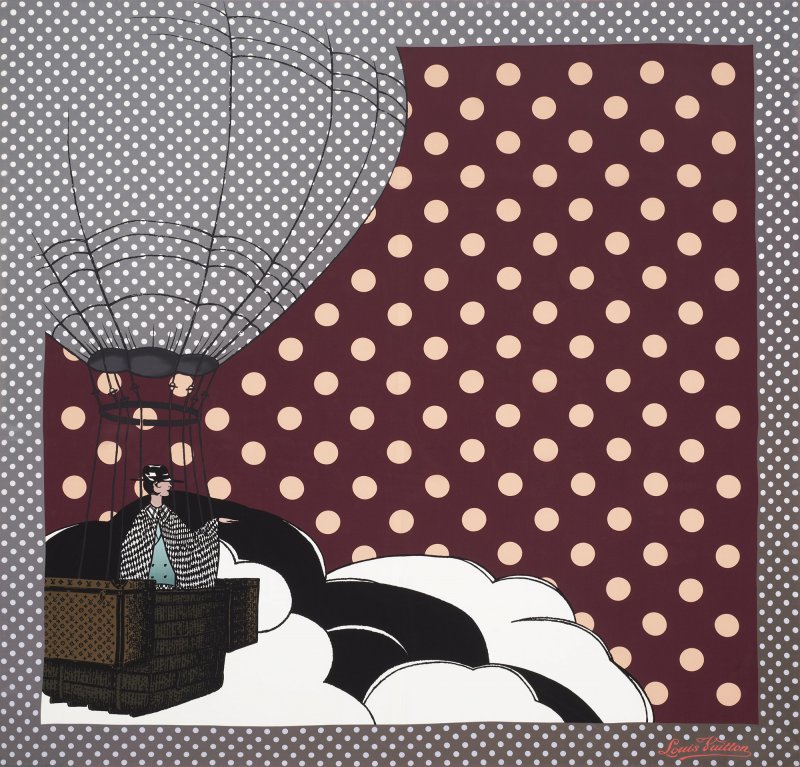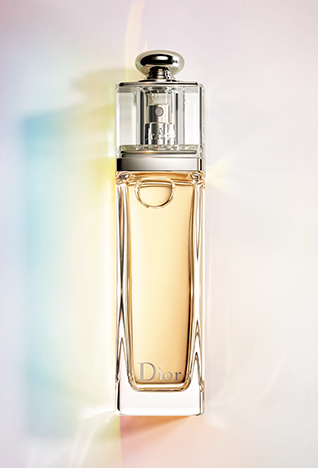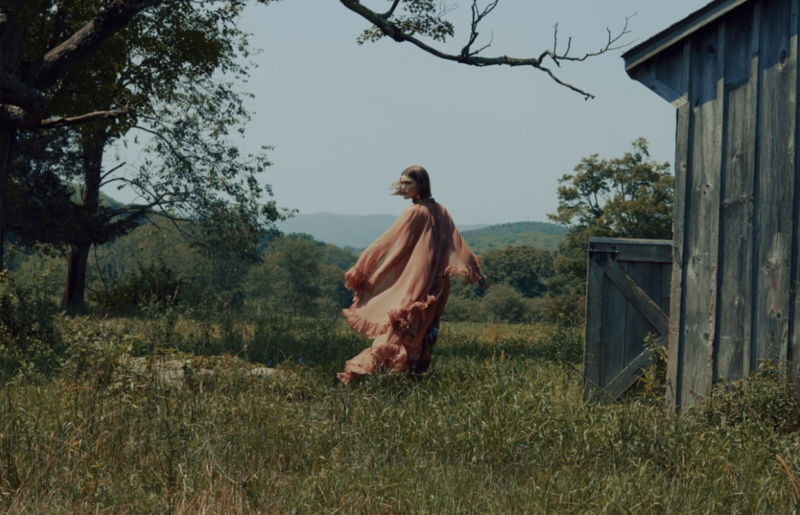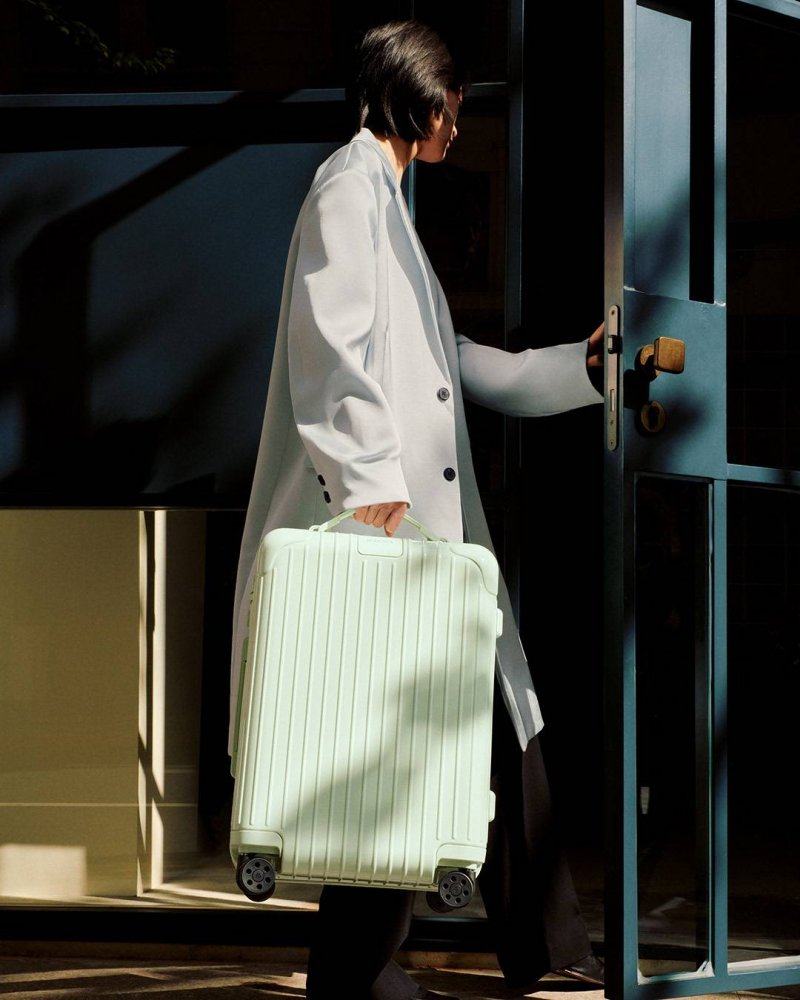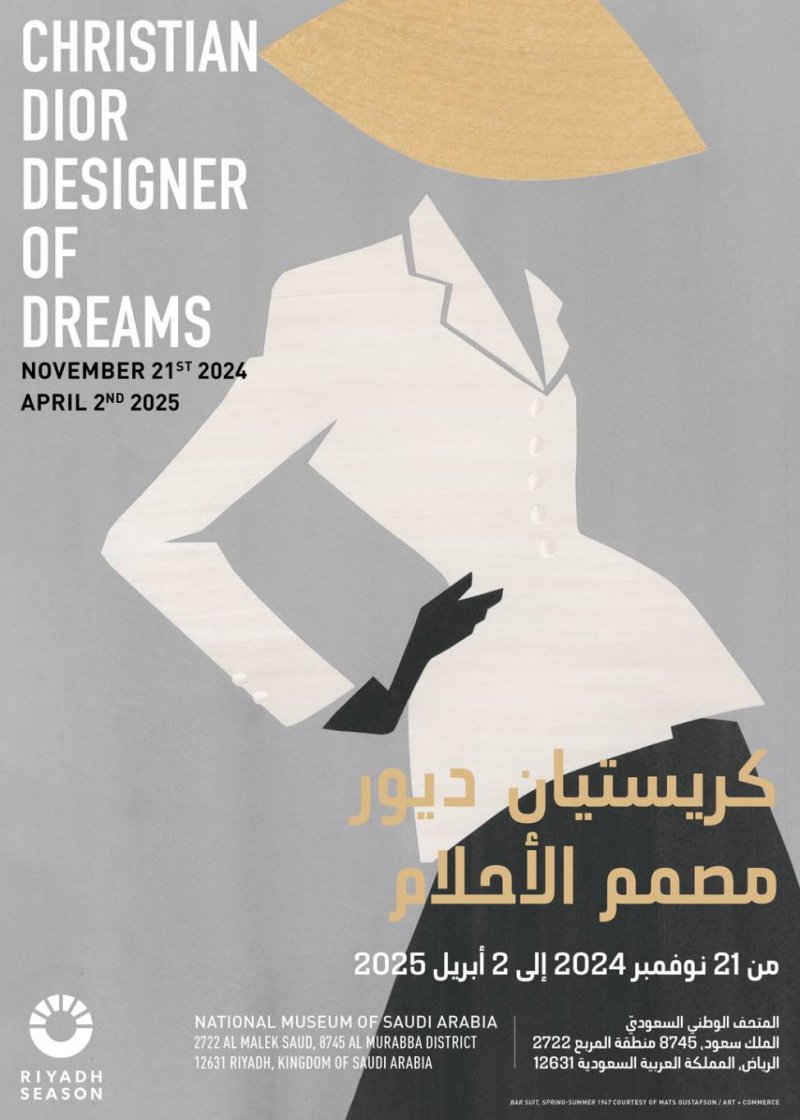Nicolas Ghesquière’s debut at Louis Vuitton was the most highly anticipated show of fall 2014. His heartfelt typewritten letter, placed on every chair at the show, expressing his “immense joy” and acknowledging the “proud legacy” of the iconic brand he was now a part of, set the tone for what was to be the historic start of a brand-new era.

In his letter, he humbly addressed the legacy of his predecessor, Marc Jacobs, who was at the helms of the French luxury house for 16 years. From the moment the show began it was evident that times had changed. A completely different tone of voice was narrating, one that is the antithesis of the out-of this-world presentations that Marc Jacobs had been known for.
From the start of the show when the metal blinds of the Cour Carrée opened and out stepped Freja Beha Erichsen it was made abundantly clear that “the quest for authenticity and innovation,” that is at the heart of the legendary house, would be fulfilled. Ghesquière presented a collection that was retro yet totally modern—and utterly refreshing.

Clothing and shoes had a distinct vintage feel that were done with innovative technical execution—something Ghesquière is known for from his days at Balenciaga. Marc Jacobs had already put focus on establishing a strong ready-to-wear collection and Ghesquière took that even further by creating more wearable pragmatic pieces that are easy to mix and match. The result was both timeless and of the moment with an acute understanding of who the modern woman is. “I think I have this vision of Vuitton as multiple propositions...it is a woman who is talented at mixing clothes, more than having a (single) look,’’ explained Ghesquière. “It’s that modernity that I love with Vuitton. It’s this easiness that you have comfortable functional pieces, embellished pieces, it’s the way you mix it together, this new casualness that I am interested in.’’

The famed nineteenth century Louis Vuitton trunks were transformed into beautiful miniature handbags, the Petite-Malle, that somehow looked avant-garde. It comes in either the monogram canvas or the épi leather and features a removable soft outer skin and can either be carried like a clutch or worn as a shoulder bag.
Creating an even bigger buzz is the fact that the bags are currently only available by request—which explains why we’ve only seen them on fashion elite. No price nor release date have been given, however, rumor has it that they will be sold in an extremely limited release to VIP costumers by August 15th and the price tag will be more similar to an Hermès bag. Every bag in the collection will undoubtedly be seen on street style images as the IT bags of the season—all with a retro twist that goes so well with fall trends.

However, it is not just the bags that will surely be the IT pieces for fall, the accessories, shoes and clothing as well will be hard to come by—and surely be copied immensely by high-street brands! The extra large one earring featured in the ads and the runway show is another trend that will be rocking fall fashion—and presumably be sold out at Louis Vuitton stores instantly.

Though based on retro-codes, the shoes are futuristic and refreshingly modern and this combination definitively sets a prevailing new language for LV.

Ghesquière knows what it entails to be the creative director of the biggest luxury powerhouse in the world—sales of handbags and accessories are the most important product sector for most luxury brands—and his new vision for the brand has reinvigorated the product lines from all ends, giving consumers even more of a reason to obsess over the brand.
Though Ghesquière does not design every single bag, shoe and accessory sold in the Louis Vuitton stores, the product will have to mirror his vision. Everything within the Louis Vuitton stores has been given a different look, right down to the scarves on the employees (which are more ‘60s inspired).
Overall, the collection proved that there is a clear focus on what the Louis Vuitton woman looks like—she is sophisticated and dresses for herself rather than others. “I think that’s what I started today. It’s a silhouette now. It’s not only bags or only clothes, it’s a silhouette. It has to be a whole look.” Ghesquière’s new perspective is refreshingly feminine, totally luxurious and downright cool but more importantly ahead of our time.
The Campaign
The fall ’14 campaign—the first expression of the “new Louis Vuitton”—entitled, “Series 1”, is told through the lenses of three of the most renowned photographers; Annie Leibovitz, Bruce Weber and Juergen Teller. Shot on the same day, same time, at very different locations, each photographer expressed both the mood of the collection and Nicholas Ghesquière’s vision, as well, as their own personal take on fashion today.
For Nicolas Ghesquière, “It’s a way to bring together an artistic family which I feel close to.(…) Only they could rise to the challenge of being brought face-to-face with one another, and ultimately combined to create a single story, because their visual expression is so powerful that it goes beyond all forms of classification or definition.” (via louisvuitton.com)
In the ‘First Opus’ Annie Leibovitz shot Charlotte Gainsbourg in the studios of artists Ellsworth Kelly, Brice Marden and Storm King Art Center in New York.

Bruce Weber captured models Liya Kebede, Jean Campbell and Kirstin Liljegren in Miami for the ‘Second Opus’ and in the ‘Third Opus’ the raw, undisguised style of photographer Juergen Teller was expressed through Freja Beha at the Scandinavian pavilion of Venice’s Giardini della Biennale.
To watch the full video of all three Opuses in ‘Series 1’ go to louisvuitton.com






